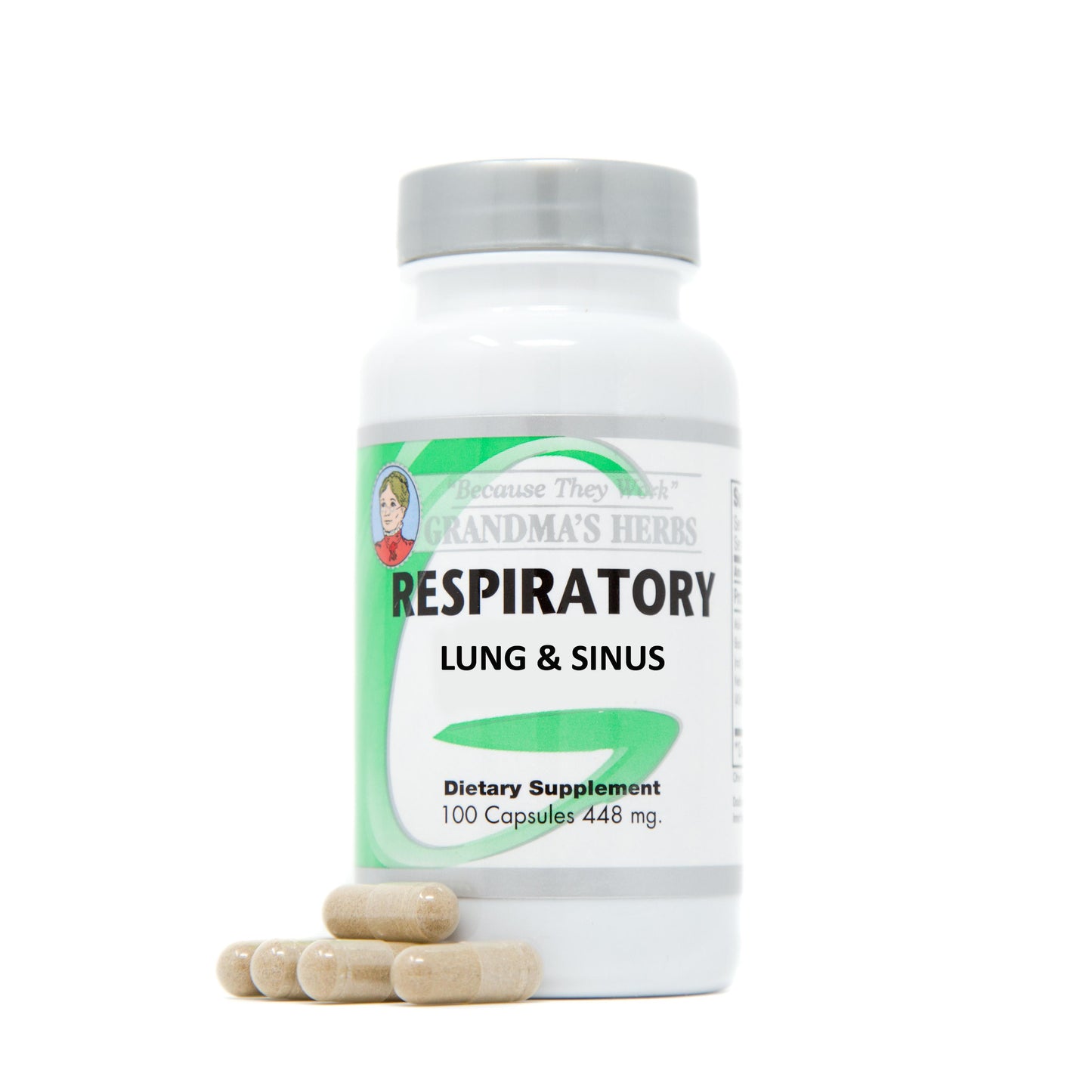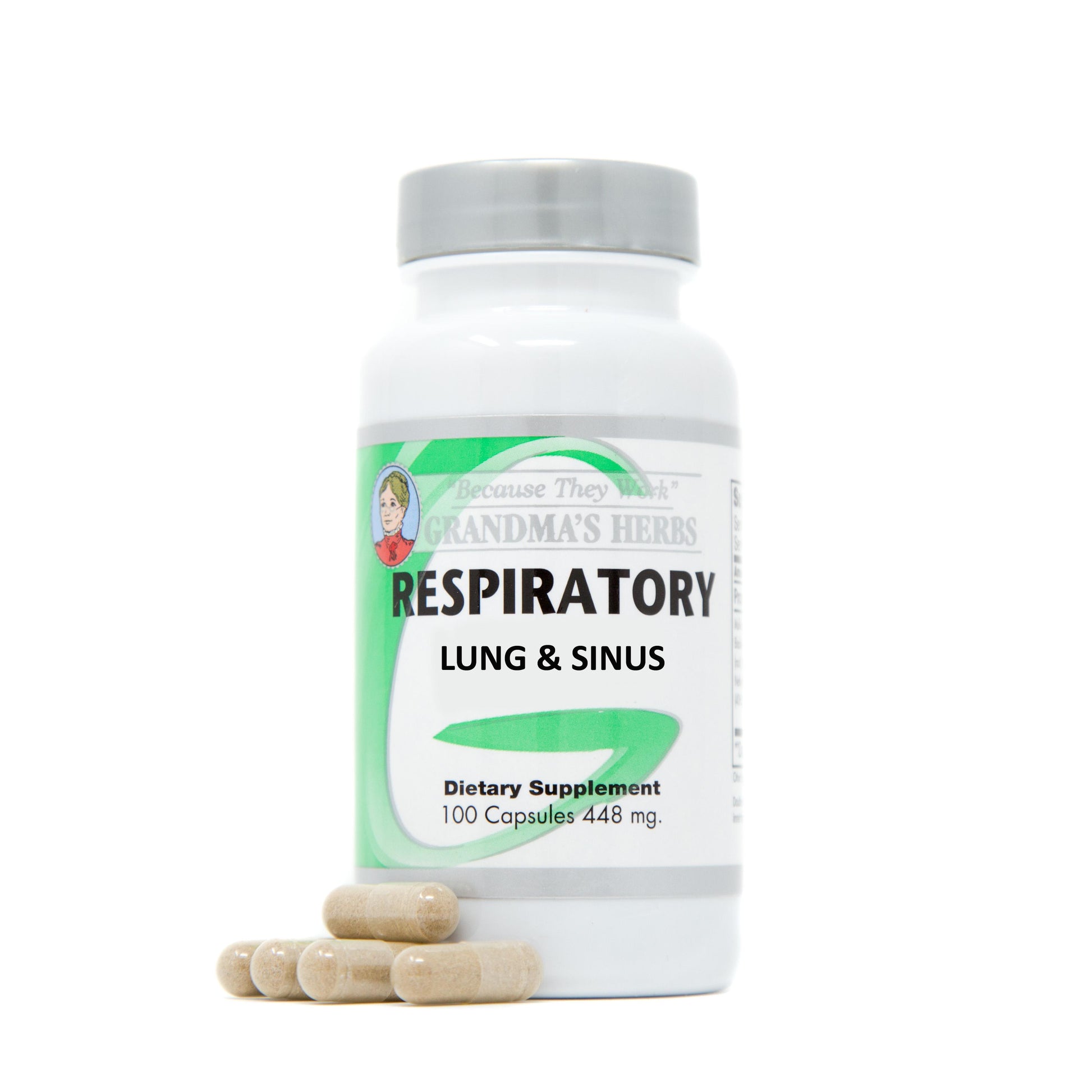Grandma's Herbs
Respiratory
Respiratory
Couldn't load pickup availability
Research:
Mullein: Supporting Wellness Through Centuries of Traditional Use
-
Historical Significance:
Mullein (Verbascum thapsus) has been valued in Scotland and England for centuries and is traditionally associated with supporting respiratory health. Its role in traditional herbal practices underscores its contribution to promoting overall well-being.* -
Nutrient Content:
Mullein contains essential minerals salts that support tissue health, nervous system function, and strong bones. These nutrients play a vital role in maintaining general health.* -
Traditional Classifications:
Herbal literature traditionally highlights mullein’s leaves and flowers for their ability to support the natural balance of the body’s mucous membranes, and promote overall comfort in the respiratory system.* -
Cultural Names and Applications:
Historically known as "lungwort" in ancient Rome and Ireland, mullein was often associated with respiratory wellness in traditional practices. The historical naming of herbs frequently reflected their perceived uses based on traditional observations.* -
Ongoing Research:
Modern studies continue to investigate mullein’s potential benefits for respiratory health and its broader role in supporting wellness. This research helps to bridge traditional use with contemporary understanding.*
Elecampane: A Traditional Herb for Wellness Support
-
Traditional Classifications:
Elecampane (Inula helenium) has been described in traditional herbal literature as a versatile herb used to support various aspects of health, including promoting balance in the body’s natural systems and contributing to overall wellness.* -
Pulmonary System Support:
Elecampane has a rich history of traditional use for maintaining respiratory health. It has been traditionally recognized for its role in supporting sinus comfort and promoting healthy respiratory function.* -
Natural Mucus Support:
In traditional herbal practices, elecampane is noted for its ability to assist the body’s natural processes of maintaining clear and comfortable airways.* -
Centuries of Use:
For generations, elecampane has been celebrated in herbal traditions for its supportive role in maintaining the healthy function of respiratory and sinus systems. It continues to be a valuable part of herbal wellness approaches today.*
Bayberry: A Traditional Herb with Unique Properties
-
Plant Profile:
Bayberry (Myrica cerifera) is a fast-growing, evergreen shrub with dense branches. Its dark blue berries are known for their rich antioxidant content, which contributes to its inclusion in traditional wellness practices.* -
Traditional Uses:
Historically, bayberry has been recognized because of its astringent properties. It supports the natural processes of a healthy digestive tract and a healthy respiratory system.* -
Key Active Compounds:
Bayberry contains tannins, known for their support of healthy mucous membranes. Additionally, it features a flavonoid called myricetin, extracted from various parts of the plant, which has been studied for its antioxidant activity and role in neutralizing free radicals.* -
Historical Significance:
During the 19th century, Samuel Thomson, a pioneer in herbal studies, recognized bayberry for its ability to promote warmth and vitality within the body. It was particularly valued in traditional herbal practices for supporting respiratory health and the body's natural processes of maintaining balance and vitality.*
The information provided above is for educational purposes only and does not pertain to the performance or intended use of any specific products featured on this website.
*These statements have not been evaluated by the Food and Drug Administration. This product is not intended to diagnose, treat, cure, or prevent any disease.
Help Me Choose:
What Do My Lungs Actually Do?
Let’s start with the basics. The best-known organs in the respiratory system are the lungs. The lungs are where all of the magic happens. They are where the exchange of oxygen into the body for carbon dioxide being sent out of the body happens. As we all know oxygen is absolutely necessary for every cell in the entire body to function. The “magic that I refer to isn’t the rise and fall that we see as lung function. It is the gathering of oxygen in a gaseous form then making it bioavailable in a liquid form so that it can be introduced into the blood while at the same time extracting the carbon dioxide from its liquid form and changing it into a gas so that it can be expelled. That’s why I call it “magic”. That function alone supplies the whole body and every living cell in it with the oxygen needed to function as a living being.*
The information provided above is for educational purposes only and does not pertain to the performance or intended use of any specific products featured on this website.
*These statements have not been evaluated by the Food and Drug Administration. This product is not intended to diagnose, treat, cure, or prevent any disease.
Health Information:
The ”Basic” Anatomy of the Lungs.
Lungs look to be simplistic from the outside but are actually incredibly complex. The parts of the respiratory system enveloped in the chest cavity consist of the larynx, trachea, primary bronchi, secondary bronchi, tertiary bronchi, bronchioles, alveolar duct and last but certainly not least the alveoli.*
Outside air containing oxygen enters through the larynx and trachea into the bronchial system. There are fifteen levels in the bronchial system. The bronchial system is formed much like a tree starting with a trunk and continually dividing itself into smaller but more numerous branches. All of their branches are able to expand and contract with the inhale and exhale motions of the lungs thereby moving the oxygenated air into all of the smallest branches. The alveolar duct and the alveoli might be seen as the stem and the leaf of the “bronchial tree”. The alveolar duct and the alveoli are where the actual exchange of oxygen for carbon dioxide happens.*
The information provided above is for educational purposes only and does not pertain to the performance or intended use of any specific products featured on this website.
*These statements have not been evaluated by the Food and Drug Administration. This product is not intended to diagnose, treat, cure, or prevent any disease.
Ingredients:
Mullein (leaf), Bayberry (bark), Horehound (leaf), Bladder Pod (herb), Heal All (herb), Elecampane (root), Yerba Santa (herb), Plantain (herb), Nettle (leaf), Coltsfoot (flower), Cayenne (fruit 40 HU), Lungwort (herb)
Instructions:
2 Capsules 3 times a day 1/2 hour before meals when possible. May use more as needed.*
*These statements have not been evaluated by the Food and Drug Administration. This product is not intended to diagnose, treat, cure, or prevent any disease.
What’s Included:
1 Bottle of Grandma's Herbs RESPIRATORY 100 Capsules
Features:
This all-natural formula is designed to promote respiratory function.*
- Mullein has been cultivated in Scotland and also in England for centuries. Traditionally it was used to naturally support healthy respiratory function.*
- Elecampane is traditionally used to expel mucus. It is in the expectorant category.*
The information above is for informational purposes only. It does not reflect or relate to the performance or purpose of any products that contain similar materials.
* "Herbal supplements are not drugs. They are not intended to diagnose, treat, cure or prevent any disease."*
Share




